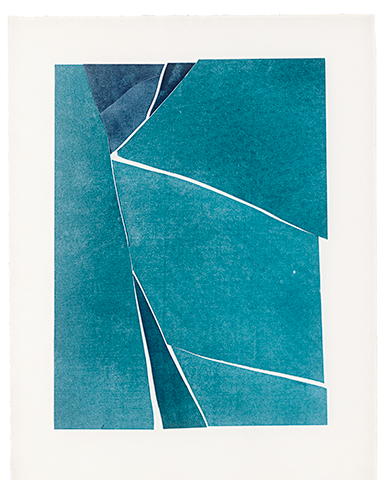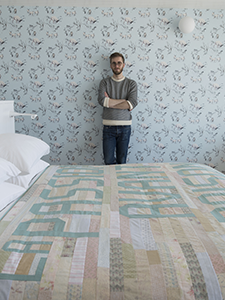Associate Professor
School of Critical and Creative Studies, AUArts
AUArts Alum 2001, BFA | Drawing
AUArts: What classes do you teach?
August: I teach art history and research methodologies at the graduate and undergraduate levels. For art history, I mostly teach 1789 to the present. So that encompasses a few different classes, including our class on modernism. Also, the Canadian art history class, which is called Canadian Context. I teach a genre class focused on the historic genre of still life.
I teach another course that's a seminar devoted to site-specific art. And I teach the graduate introduction to advanced research methodologies. Also this year I'm going to start teaching an undergraduate seminar that's on queer research methodologies.
AUArts: I understand you’re preparing for some exhibitions as well.
August: I have quite a few coming up. I'm in a group show at the Ottawa Art Gallery called “Facing Claude Cahun and Marcel Moore.” And then I'm in another group show at The Kitchener-Waterloo Art Gallery. I have a solo show next fall, at Latitude 53, which is a space in Edmonton.
AUArts: Do you find it challenging to balance your own work versus teaching?
August: Of course, I always wish there was more time for everything. More time for research, more time for the studio, more time for my distance running practice. I don't feel like my teaching position hinders me from doing what I love to do in the studio.
In a way, I would actually say that my research in art history really is braided into my studio practice. There are lots of examples of art projects that I started that have germinated from archival research that I've done because of my teaching practice, or my research practice in art history. So, they do work really well together for me.
AUArts: You went to AUArts in 2001?
August: Yes, I did a BFA in Drawing.
AUArts: How did you end up back at AUArts teaching?
August: Alberta is really important to me. I have a lot of family in the province. There are lots of motivating factors that drew me to the location. And knowing the institution and the calibre of the students and the faculty. When the job came up, I knew this is definitely where I want to be.

AUArts: What do you think makes AUArts students special compared to other art schools or institutions?
August: I think that they're incredibly tenacious. I've noticed that at AUArts, a lot of students have made major life changes to make it possible for them to attend the institution. This is a really big commitment for them. And they're extremely devoted to their work in the institution. They're really curious to learn more.
I do think that it has something to do with the fact that many of them moved to our region from smaller communities, from other parts of the Prairies or from the north. And for them to come to Calgary, it just represents such a big commitment that I think they take it extremely seriously. Like they made a choice, and they're dedicated to it.
I also think because the university has such a strong focus on the craft discipline, especially now that we have a master’s program, we also draw a special kind of student who knows that they want to study a craft discipline. Likewise, the Visual Communication program is also very highly regarded. We have a lot of students that come in directly knowing, “That is exactly what I want to do.”
AUArts: What is your favourite part about teaching at AUArts?
August: Well, to talk with students and my peers about art every single day. What could be better than that? We just get to have these incredible conversations. The core work that we do every day is about having a conversation about what art, craft and design are and their meaning today. Their meaning in the past. Their meaning in continuum. And what could be better to talk about?
I think that is the most important thing that we can talk about.
What those different disciplines do, they have ramifications in terms of ecology, they have ramifications in terms of race, gender, sexuality, and class, in terms of nation building and challenging the nation-state, and in terms of civil disobedience and activism, and also just in terms of how we think about our day-to-day lives as citizens. All of those issues are at the core of what art, craft and design are focused on, just all in different ways.
That’s the way I see the examples that I show in my classrooms. So, if I’m showing a piece of architecture, we are going to talk about it maybe in terms of how this building is a manifestation of colonialism. And maybe we're going to talk about how its redesign is an example of ecological intervention, because it has a green roof or a sustainable system of plumbing for water usage. The case studies that we look at give an opportunity to talk about these bigger issues and that's why I think that art, craft and design are the most important thing to talk about because they end up having outcomes in all of these other different areas.
It’s just really a privilege to be at an institution where students either show up with those skills, or they're ready to acquire them or develop the skills to have conversations about those issues. Especially this past year, I’ve had some really incredible conversations with students, about how power and identity are at work in art history, in contemporary art, but then also in
university itself.
AUArts: What do you enjoy about the AUArts community?
August: There are a lot of things that I really love about the university community. I think that right now there are some really important conversations happening about race, gender and sexuality in the classroom and a lot of our students are arriving with the skills, the discursive skills to critique, using methodologies that relate to race, gender and sexuality.
It’s just really a privilege to be at an institution where students either show up with those skills, or they're ready to acquire them or develop the skills to have conversations about those issues. Especially this past year, I’ve had some really incredible conversations with students, about how power and identity are at work in art history, in contemporary art, but then also in university itself.
I've really been excited to see my students, how compelled they are to work on these questions and then also the skill level that they have. That’s one thing I really enjoy.
Obviously, there are lots of other things, too. I think we have an amazing set of galleries. The Marion Nicoll is an incredible institution. The Illingworth Kerr Gallery (IKG) has done such great programming.
I think community is really at the core of the business that we do at the institution. Lots of important community building happens in those two sites. And the Lodgepole Center is another really important place for these discussions to be taking place.

AUArts: If you had advice for new students thinking of coming to art school, what would it be?
August: The piece of advice that I would give, when any of us come into the university, including faculty and staff too, is that we have to be prepared to shift our understanding and rework our understanding of what art, craft and design are and what the responsibilities are that we have as people that are working in those fields.
We have to be prepared to be nimble and thoughtful about what these different forms of making are, and how we are responsible and accountable to our communities based on what we do in those areas. You have to be ready to shift understanding all the time. I have to be ready to do it, too. I guess it's not just advice for new students.
Intagram: @august.klintberg
